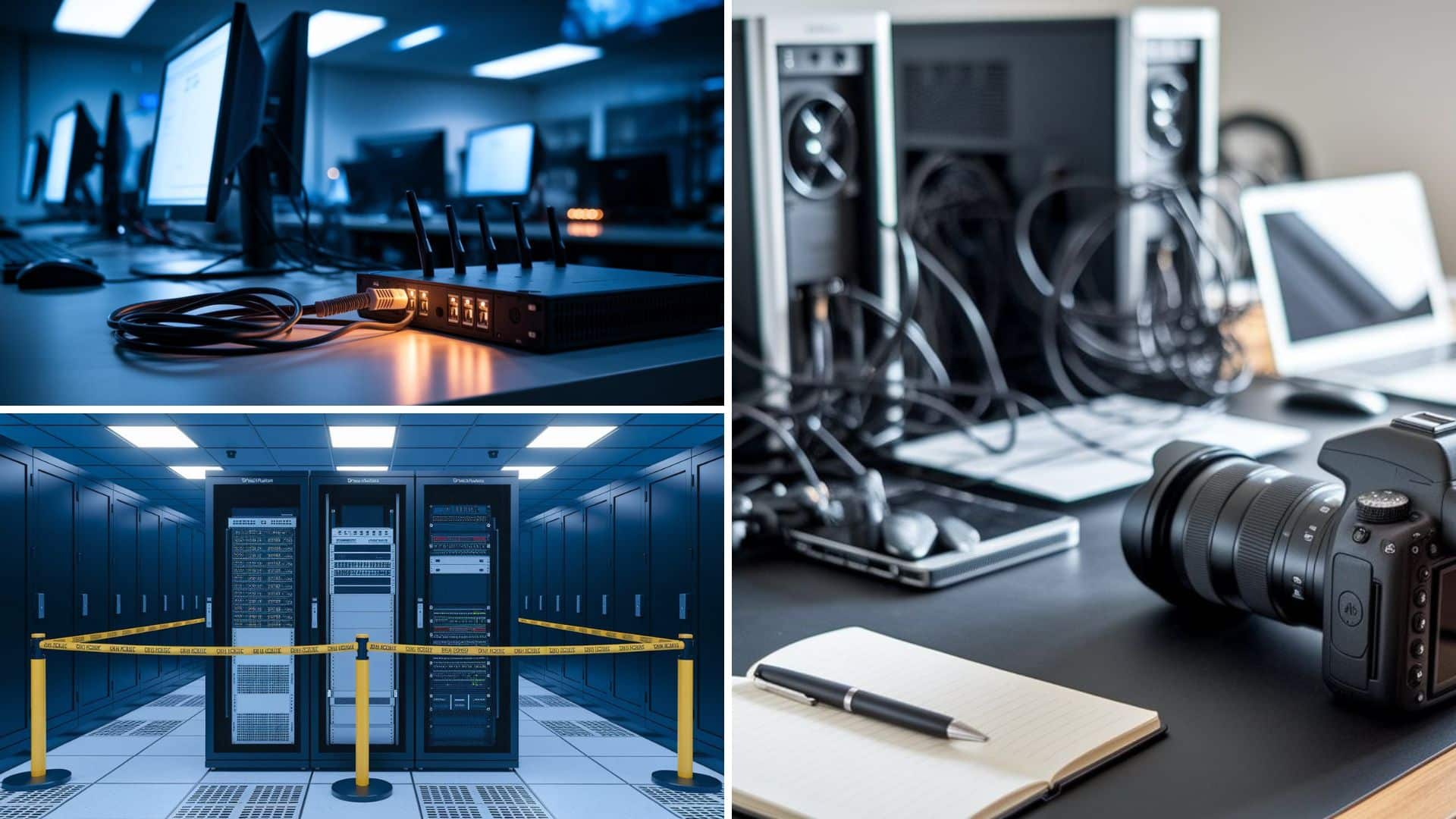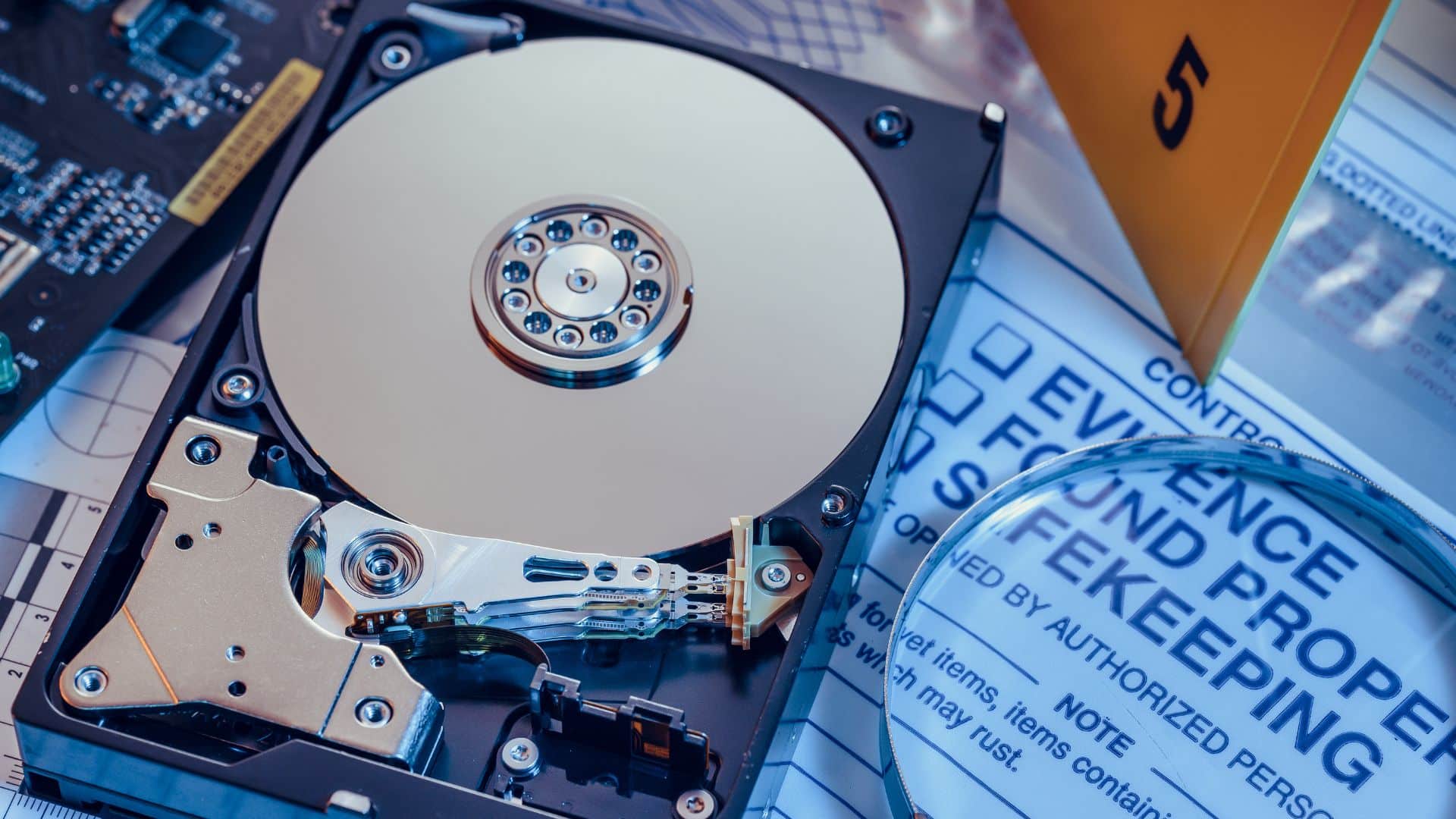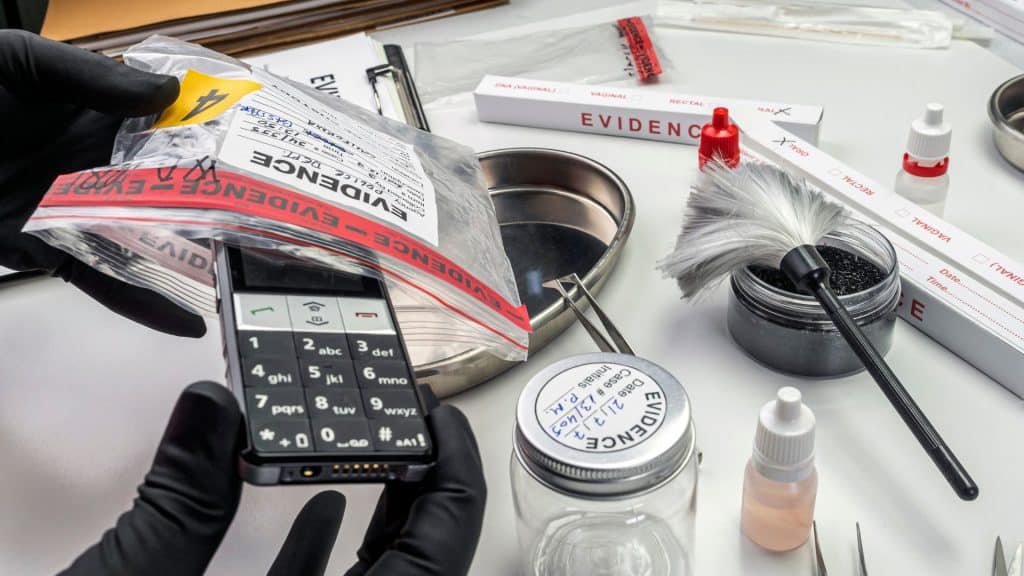Have you ever wondered how investigators track down cybercriminals who operate from behind computer screens?
When a cyberattack happens, law enforcement faces unique challenges in collecting evidence that exists only in digital form.
Unlike traditional crimes where physical evidence is visible, cybercrime investigations require specialized methods to gather proof from computers, networks, and electronic devices.
Digital evidence collection forms the backbone of successful cybercrime prosecutions. This process involves careful procedures to ensure that electronic data remains intact and legally admissible in court.
In this blog, you’ll learn about crime scene security protocols, evidence preservation techniques, collection tools, and the documentation challenges investigators face daily.
What Is Digital Evidence in Cybercrime?
Digital evidence refers to any information stored or transmitted electronically that can be used to prove or disprove facts in criminal investigations and court proceedings.
Law enforcement agencies rely on digital evidence to build strong cases against cybercriminals who commit fraud, identity theft, or data breaches. The evidence must meet legal standards to be accepted in courtrooms.
Key types of digital evidence include
- Email communications between suspects and victims.
- Network logs showing unauthorized access attempts.
- File timestamps reveal when data was modified or accessed.
- Browser history indicating websites visited during criminal activity.
- Financial transaction records from online banking or payment systems.
- Encrypted files containing stolen or sensitive information.
Unlike physical evidence, digital proof requires precise forensic tools and expert handling to extract information without altering its original state.
How Are Cybercrime Scenes Secured Initially?

Securing digital crime scenes requires immediate action to prevent evidence destruction or contamination that could compromise the entire investigation process.
Step 1: Isolating Affected Systems
Investigators must quickly disconnect compromised computers and devices from networks to prevent further damage or evidence tampering by cybercriminals.
Network isolation stops ongoing attacks while preserving the current state of affected systems for detailed forensic analysis by trained specialists.
Step 2: Controlling Physical Access
Law enforcement personnel establish physical barriers around computer equipment and restrict access to authorized investigators only during the collection of evidence.
Controlling who can touch or interact with digital devices prevents accidental data loss and maintains the legal integrity required for court proceedings.
Step 3: Documenting the Scene
Photography and detailed notes capture the initial state of all electronic equipment, cables, and connections before any evidence collection begins.
Proper documentation creates a permanent record that courts can reference to verify that evidence collection followed established legal procedures.
Identifying Key Sources of Digital Evidence
Investigators must locate all potential sources of digital evidence within the crime scene to ensure comprehensive data collection for prosecution.
Common sources of digital evidence include
- Desktop computers and laptops: Primary storage devices containing user files, applications, and system logs.
- Mobile phones and tablets: Communication records, location data, and installed applications with user activity.
- Network routers and switches: Traffic logs showing data movement and connection attempts between devices.
- External storage devices: USB drives, external hard drives, and memory cards containing backup or stolen data.
- Cloud storage accounts: Online files, backup data, and synchronization logs accessible through user credentials.
- Smart home devices: Internet-connected appliances that may contain voice recordings or usage patterns.
What Techniques Are Used for Evidence Preservation?
Evidence preservation ensures that digital data remains unchanged and is admissible in court throughout the investigation and subsequent proceedings.
Creating Forensic Images
Investigators make exact bit-by-bit copies of storage devices using specialized software that captures all data, including deleted files.
Calculating Hash Values
Mathematical algorithms generate unique fingerprints for digital files that can detect any unauthorized changes made to evidence after collection.
Maintaining Cold Storage
Evidence storage systems keep digital media in controlled environments that prevent data degradation and unauthorized access during investigations.
Using Write Blockers
Hardware devices prevent any modifications to the original storage media while investigators examine and copy digital evidence for analysis.
Tools for Collecting Digital Evidence

Professional investigators use specialized software and hardware designed specifically for forensic examination of electronic devices and network systems.
Popular forensic tools include commercial software packages that can recover deleted files, analyze network traffic, and create detailed reports.
| Tool Category | Examples | Primary Function |
|---|---|---|
| Disk Imaging | FTK Imager, dd | Create exact copies of storage devices |
| Mobile Forensics | Cellebrite, Oxygen | Extract data from smartphones and tablets |
| Network Analysis | Wireshark, TCPdump | Capture and analyze network traffic |
| Memory Analysis | Volatility, Rekall | Examine computer RAM contents |
| Database Recovery | R-Studio, PhotoRec | Recover deleted files and databases |
These tools must meet legal standards and produce results that courts will accept as reliable evidence in criminal proceedings.
Why Is Documentation and Chain of Custody Important?
Proper documentation creates a legal trail that proves the authenticity of evidence and prevents challenges from defense attorneys during court proceedings.
Chain of custody records track every person who handles evidence from collection through final disposition in criminal cases across the nation.
Courts require detailed logs showing when evidence was collected, who had access, and what procedures were followed during the investigation.
Documentation must include photographs, timestamps, and signatures from everyone involved in handling digital evidence throughout the legal process.
Did you know? A single gap in the chain of custody documentation can result in evidence being thrown out of court, potentially allowing cybercriminals to escape prosecution despite strong technical proof of their guilt.
Common Challenges in Evidence Handling
Investigators face numerous obstacles when collecting and preserving digital evidence that can impact the success of cybercrime prosecutions.
- Encryption barriers that prevent access to protected files and communications.
- Data volume overload requires a significant amount of time and resources to analyze.
- Rapid technology changes that outpace existing forensic tools and methods.
- Cross-border jurisdictions complicate the collection of evidence from international sources.
- Anti-forensic techniques are used by criminals to hide or destroy evidence.
- Resource limitations affect the speed and thoroughness of investigations.
These challenges necessitate ongoing training and updated procedures to ensure the effective collection of evidence in modern cybercrime investigations.
Wrapping It Up
In summary, collecting digital evidence in cybercrime cases requires a blend of technical expertise and constant adaptation to evolving investigative methods.
The investigative process has evolved significantly as criminals become more sophisticated in hiding their digital footprints.
Success depends on investigators staying current with emerging technologies while maintaining the rigorous standards courts expect.
The future of cybercrime investigations is likely to face even more complex challenges as artificial intelligence and advanced encryption become mainstream.
However, with proper training, updated tools, and continued collaboration between law enforcement agencies, justice can prevail in the digital age.
What aspects of digital evidence collection do you find most challenging in your professional experience?





































